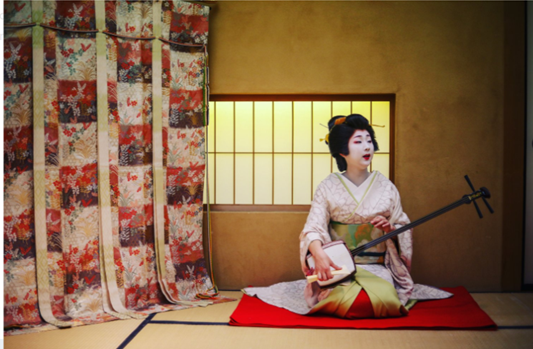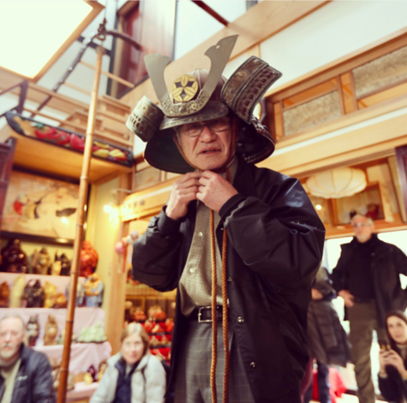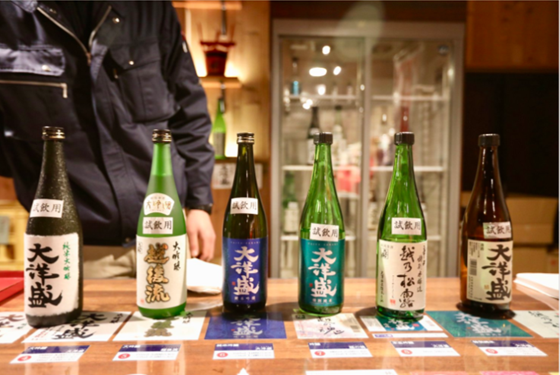Day 1
Depart from Brazil on the 9th or 10th of November and arrive at Narita Airport (NRT) in the early afternoon of the 11th. Please choose a flight arriving around 2pm in Tokyo. Welsome to Japan Food and Culture Trip!
Transfer to the hotel in the Ginza district – chosen for our accommodation during the first leg of the trip in the Japanese capital. This is one of the main commercial districts of the city, full of boutiques, as well as sophisticated cocktail and sushi bars.
This first day is dedicated to resting from the trip and adapting to the time (jet lag) and local climate.
Day 2
We included this day in the itinerary to be an adaptation due to Jet Lag.
Those who are already rested, after breakfast, we invite you to go out with us to walk through the Toyosu Fish Market, which opened in place of the Tsukiji Fish Market, the largest fish market, known worldwide since 1935 for its tuna auctions during the early hours of the morning, and one of Tokyo’s top tourist attractions.
The rest of the day is free to visit some of the highlights of the city: the Edo-Tokyo Museum; the city of Ryogoku where the main sumo schools are concentrated; Sensō-ji, Tokyo’s oldest Buddhist temple; the Nakamise, a street of stores that sell souvenirs and typical foods. If you like design, a visit to Shopping Ginza Six will surprise you.
Our suggestion is to go to sleep early so that the body is 100% rested to better enjoy the next day’s on Japan Food and Culture Trip.
Day 3
Breakfast and departure for an exclusive gastronomic experience. We go to a miso shop located in the suburbs of Tokyo so that everyone can feel the differences and the abundance of one of the most used ingredients in Japanese cuisine. The knowledge will be conducted by Roberto Maxwell, specialist in cultural tourism in Tokyo and Carlos Fukuy, Brazilian based in Japan, chef and cook here in these parts of the East.
Afterwards, we head to a kitchen where Carlos offers us a lunch with different expressions of miso, paired with sake. A pleasant, instructive experience, as well as, of course, delicious and unforgettable.
Day 4
Breakfast and check-out from the hotel. We are going to make our first trip on the Shinkansen (bullet train) to Niigata, crossing Japan from east to west. This is a perfect time to see the autumn leaves that color the landscape. Our transport will take us straight to the Northern Culture Museum, where we will have lunch.
Gata means swamp – perfect environment for growing rice. For lunch today, we’re going to enjoy the best rice in Japan, freshly harvested at the end of October. We will cook it in a traditional cast iron pan.
That afternoon we will be taken on a visit to the Sake Lagoon Brewery, a family owned and artisanal sake producer. In this place we will have a very special class followed by guided tasting. Located in the Fukushimagata nature reserve, the factory is new and produces doburoku (unfiltered) sake.
Then we will visit the Nuttari area – a center of fermented foods. Let’s learn about the essence of Japanese food: miso and dashi. Miso paste as well as miso soup made from dashi are always on the table in the Japanese house. Let’s try several different types of Miso and Dashi.
Check-in at the hotel and rest. We’ll meet at 8 pm for a Kaiseki dinner paired with sake. Kaiseki is a Japanese multi-course dinner that starts with appetizer, sashimi, soup, stew, grilled fish and rice. A special night that also features a performance by Gueishas. We will have the opportunity to learn about the details of the cultural background of these artists.
Day 5
After breakfast, we’ll travel north by bus to Murakami. Let’s get to know its highly preserved gastronomic culture. Murakami was known as a salmon center in the 11th century and, even today, there are rows of dried salmon hanging from the eaves of houses that you can observe up close and still learn about the ancient technique of conservation. The city also still has some traditional teahouses – the Machiya.
Lunch will be an exclusive activity at Mrs. Kon (more details on the next page). After lunch we will visit a fish market to see the catch of the day. In addition, at this time of year, we will be able to see salmon roe and salmon.
In Murakami, the teahouse owner will prepare tea for us. We will drink locally grown tea by the irori fireplace in an old Machiya house. A day with authentic experiences of Japanese culture to stay in your memory forever!
We will return to Niigata mid-afternoon and have the rest of the afternoon and evening at leisure.
Day 6
Check-out after breakfast. We are going to dedicate the next few days to getting to know Sado Island.
It will be necessary to separate the luggage into two pieces: the large suitcase must remain in Niigata to be dispatched to the hotel in Tokyo (where we will be staying on the way back). Therefore, each passenger should carry only one small suitcase (travel bag).
We’ll travel by high-speed ferry and spend two and a half days on Sado Island off the coast of the Sea of Japan. It is the 6th largest island in the Japanese archipelago, it has only 52,000 inhabitants.
The island was once a place of exile for court nobles and emperors from the 8th century. In the Edo period, at the end of the 18th century, a gold rush brought workers and new wealth to the island. Due to its history and isolation, Sado has a very distinct cultural heritage and, in terms of cuisine, it produces a style of sake that is different from other parts of Niigata. We will walk along the island’s rocky coast and discover some of Sado’s special historical and cultural points of interest.
Check-in at the hotel and chance to relax in an Onsen- hot spring bath. We invite everyone to soak in the natural onsen hot springs before dinner.
Welcome dinner at Sado is kaiseki style with fresh seafood.
Day 7
Our day will feature a talk on koji, a flavorful fermented beverage made from rice and used to make sake, miso, soy sauce and more. We’ll learn what it is, how it’s made, and we’ll try what it does with food.
We will also visit a different Japanese apple and pear orchard. You will be amazed by the size of the fruits and the quality of the flavor!
In the afternoon, we will visit the picturesque fishing town called Shukunegi, by the sea and we will be able to taste some local sakes.
We will also watch a Taiko (drums) group perform, as the most famous groups are the Taiko from Kodo, here on the island of Sado. In Japanese, the word kodo means “child’s drum”.
In the evening, we will enjoy a light dinner with salad, fish marinated in koji, rice and dessert.
Return to the hotel in the late afternoon and rest.
Day 8
Free morning to enjoy Japanese breakfast and rest.
In the late morning we will check out and travel back to Niigata by fast ferry.
During the break at Niigata Station, we can buy our Bento for lunch during the train journey as, from Niigata, we will take the Shinkasen (bullet train) to Tokyo.
This time, we’ll be staying in the Shinjuku district, Tokyo’s futuristic entertainment district, known for its neon-fronted buildings full of bars, casinos, karaoke bars and themed restaurants.
We’ll leave Saturday night free to enjoy the nightlife.
Day 9
Breakfast at the hotel and free day in Shinjuku for free activities. We suggest walking through the Gyoen National Garden, going to the Metropolitan Governmen building observation deck for a coffee and an amazing view of the city; or visit the Samurai museum.
The most famous mall is NEWoMan, with coffee options on the roof gardens.
In the evening, let’s fraternize having dinner together at an Izakaya. For those with energy, we suggest ending the night with karaoke.
Day 10
Breakfast at the hotel and departure to Narita Airport. We wish those who leave for Brazil an excellent return, remembering that breakfast and transfer to the airport are included.
For those who stay in the country to learn a little more about this fascinating ancient culture, we wish you excellent experiences! End of Japan Food and Culture Trip.






